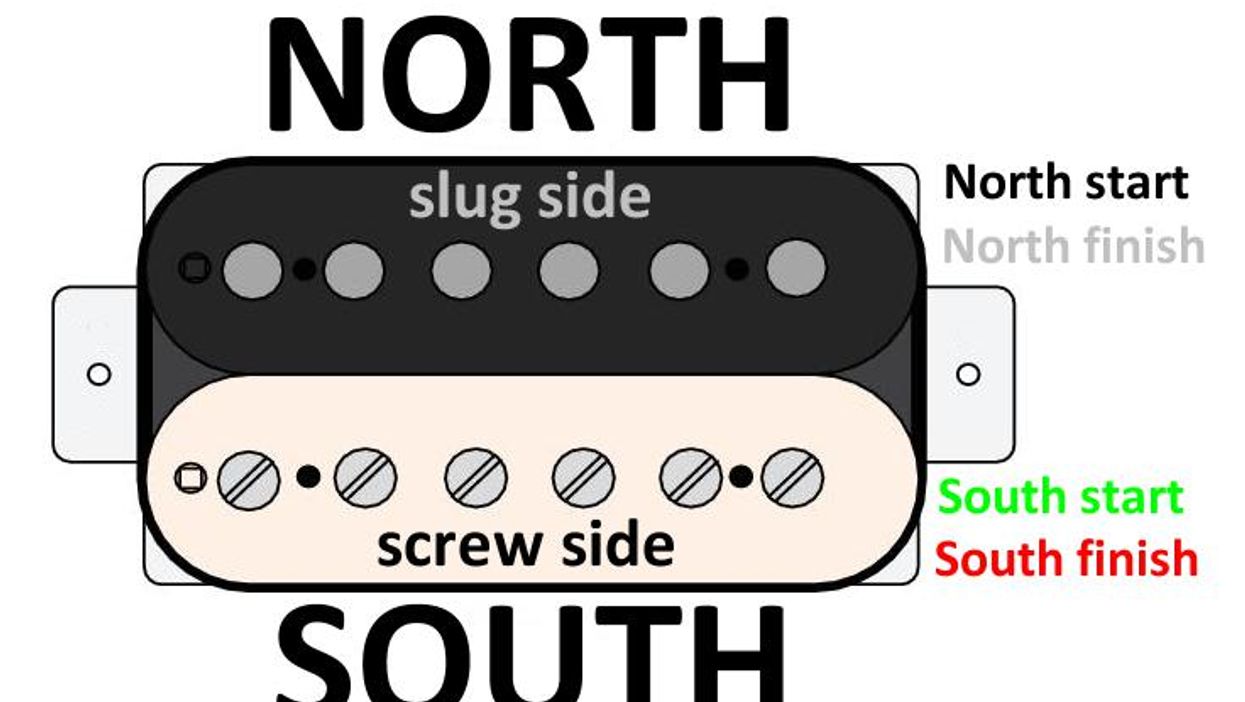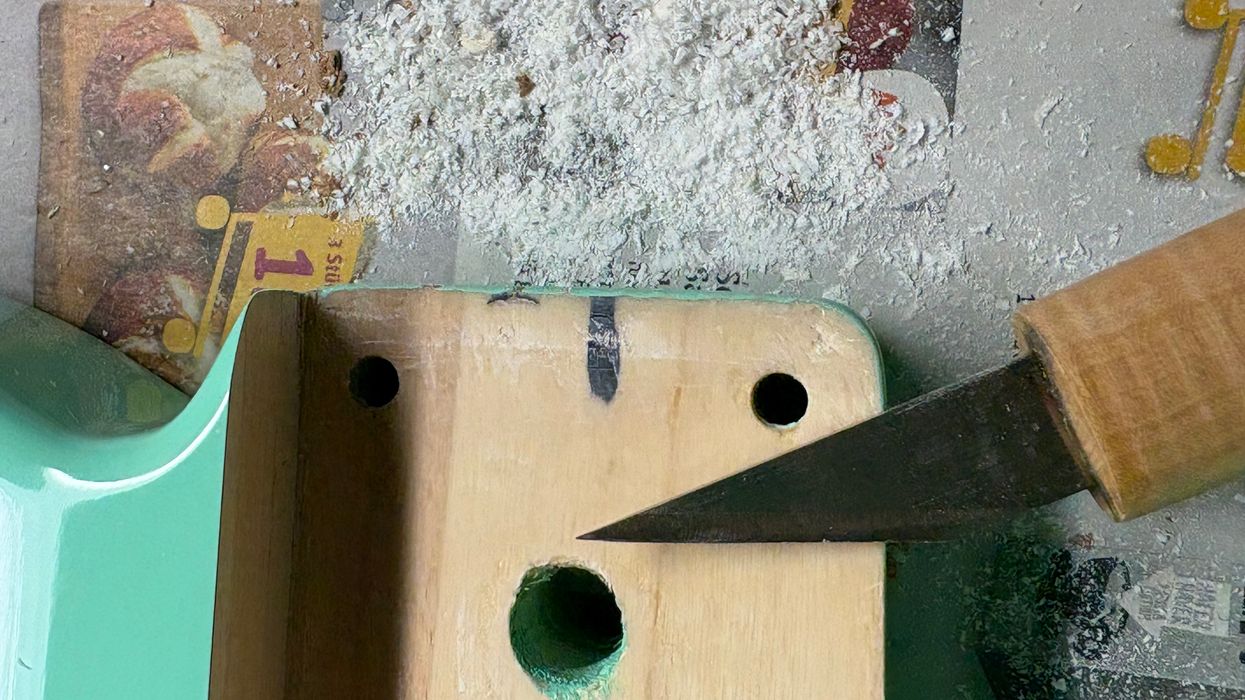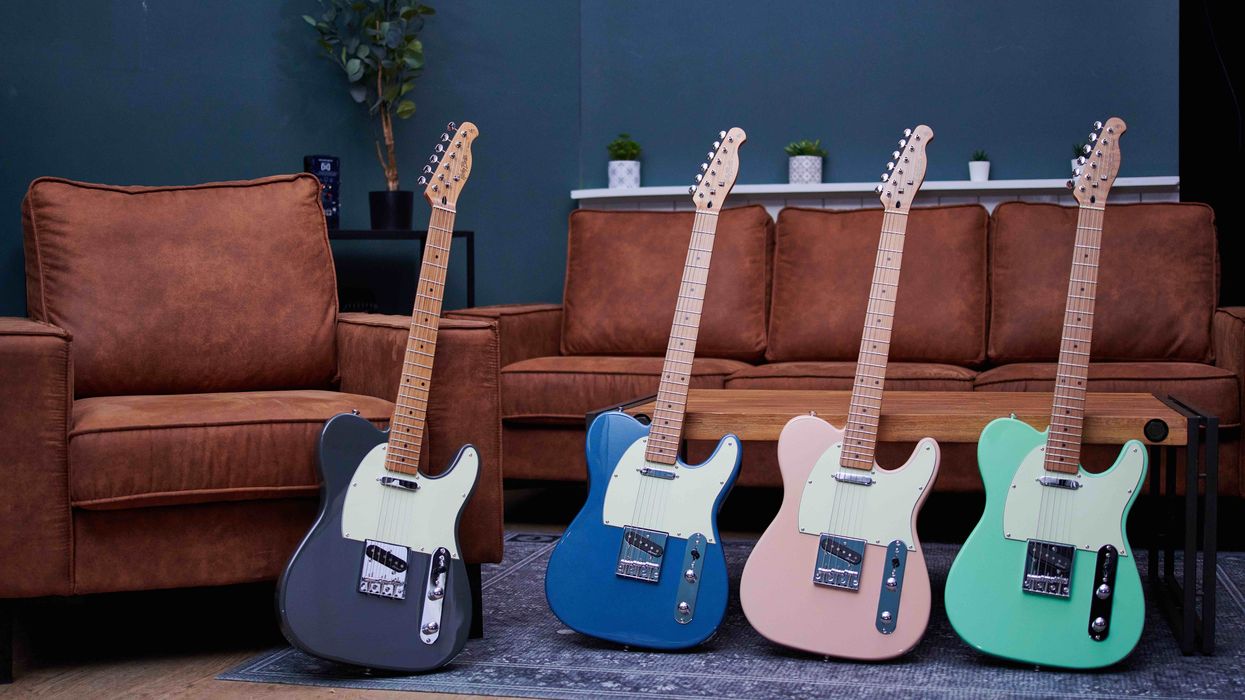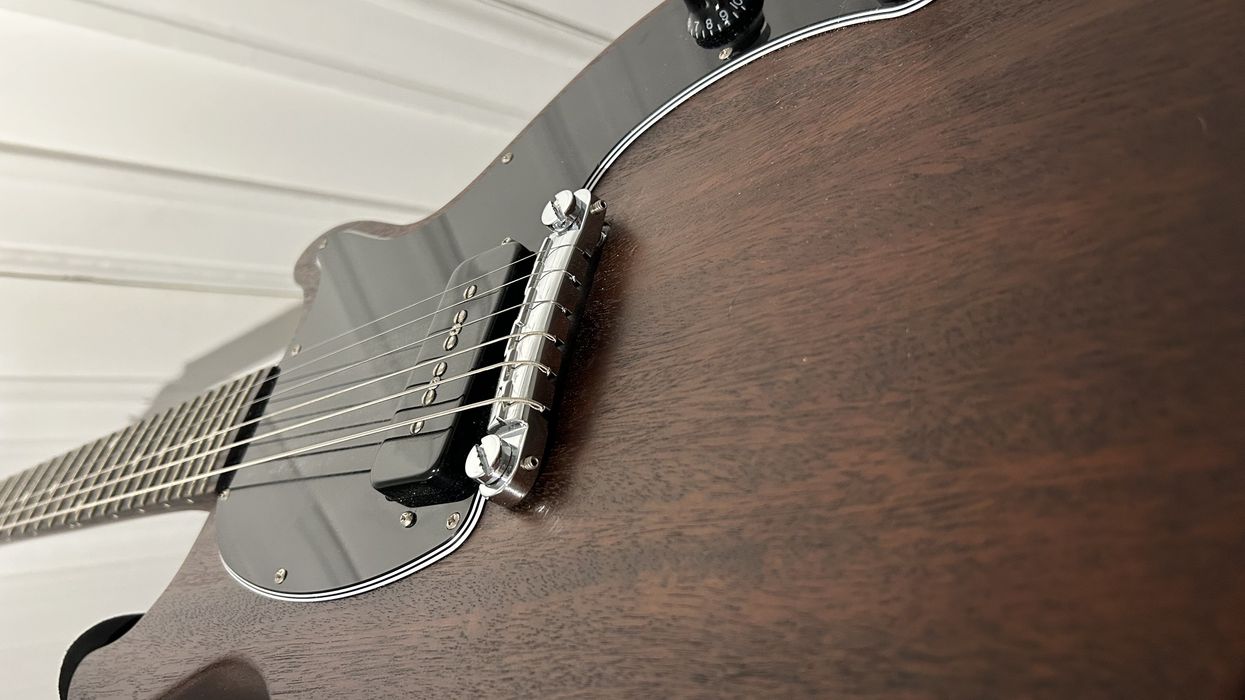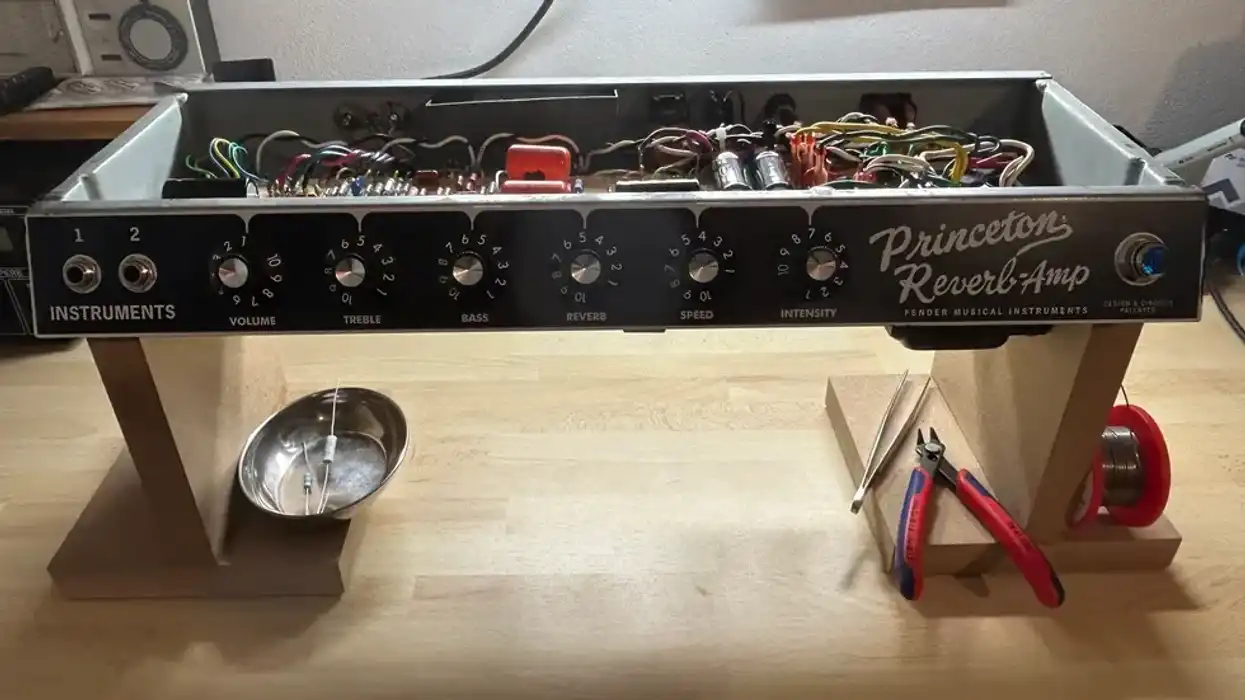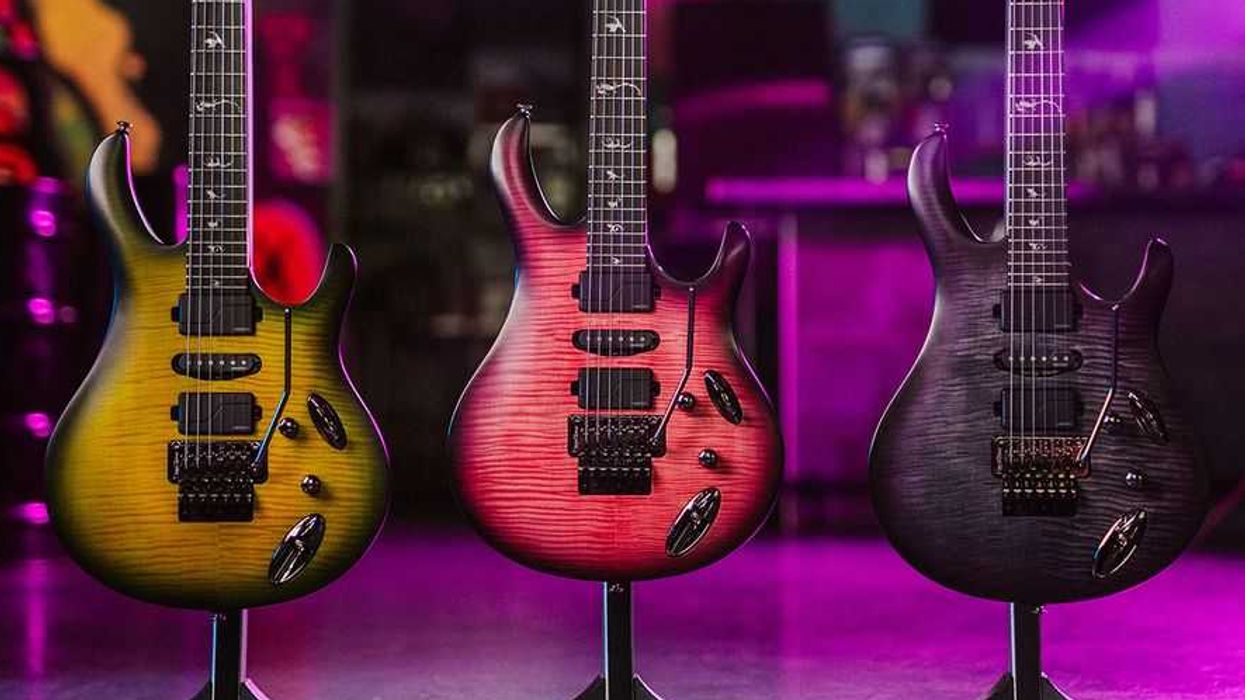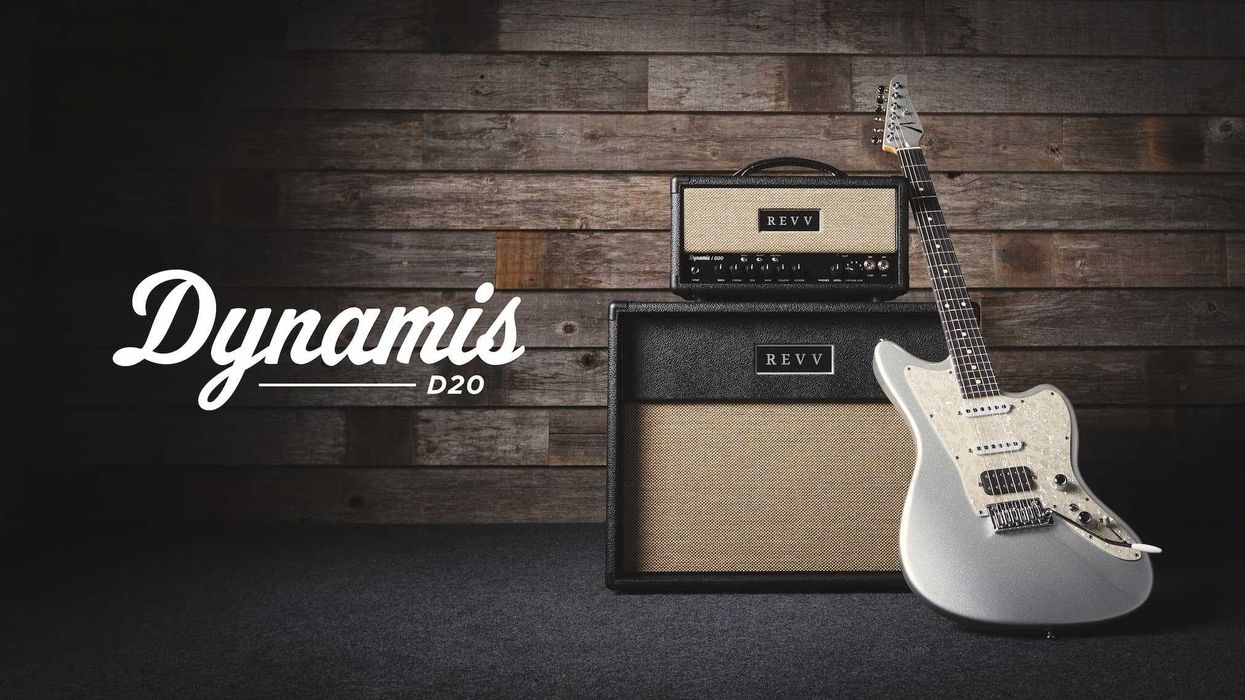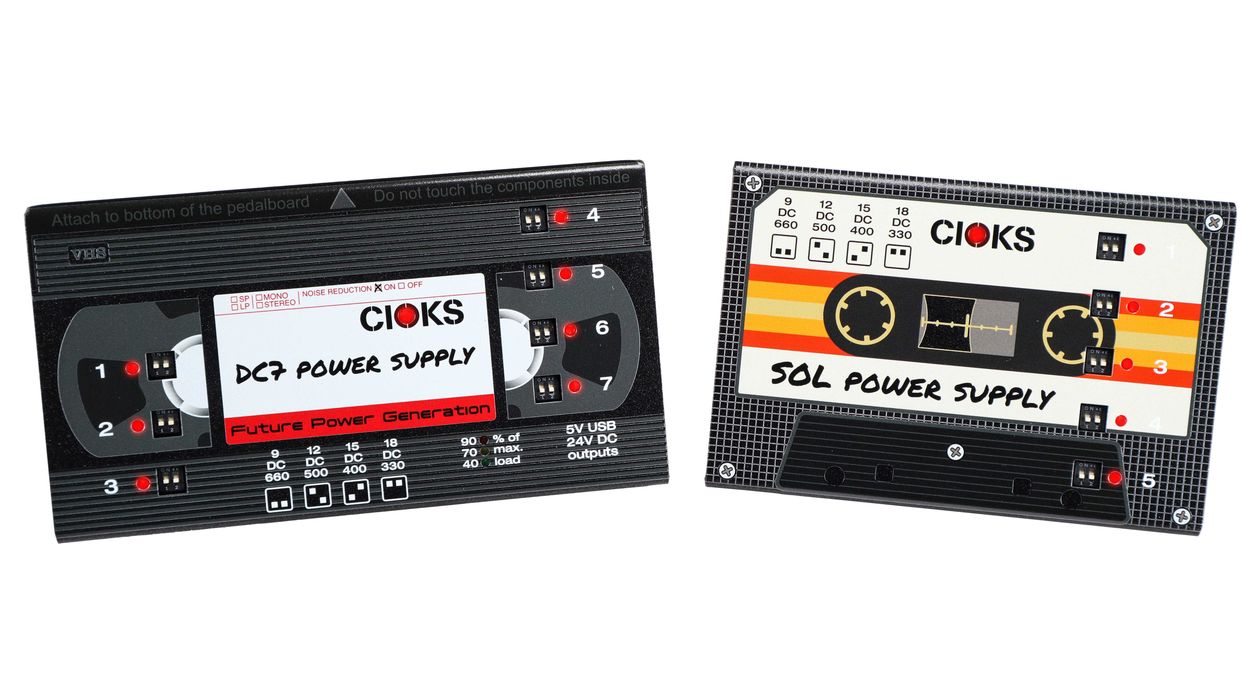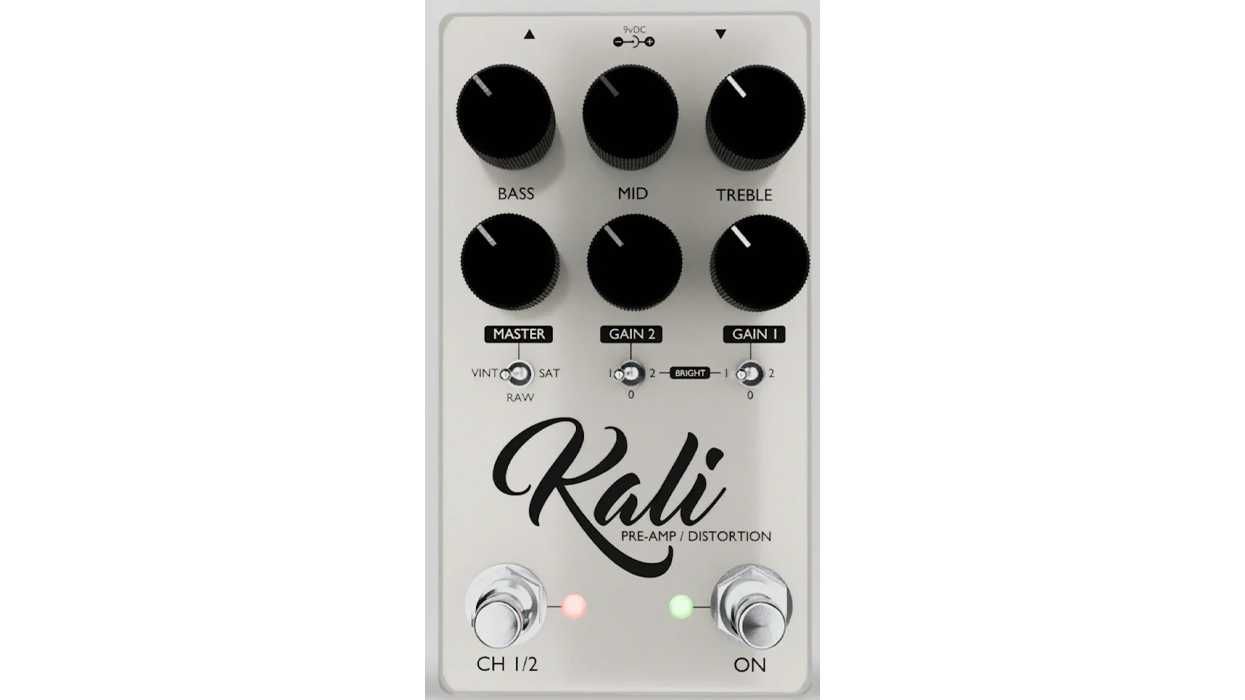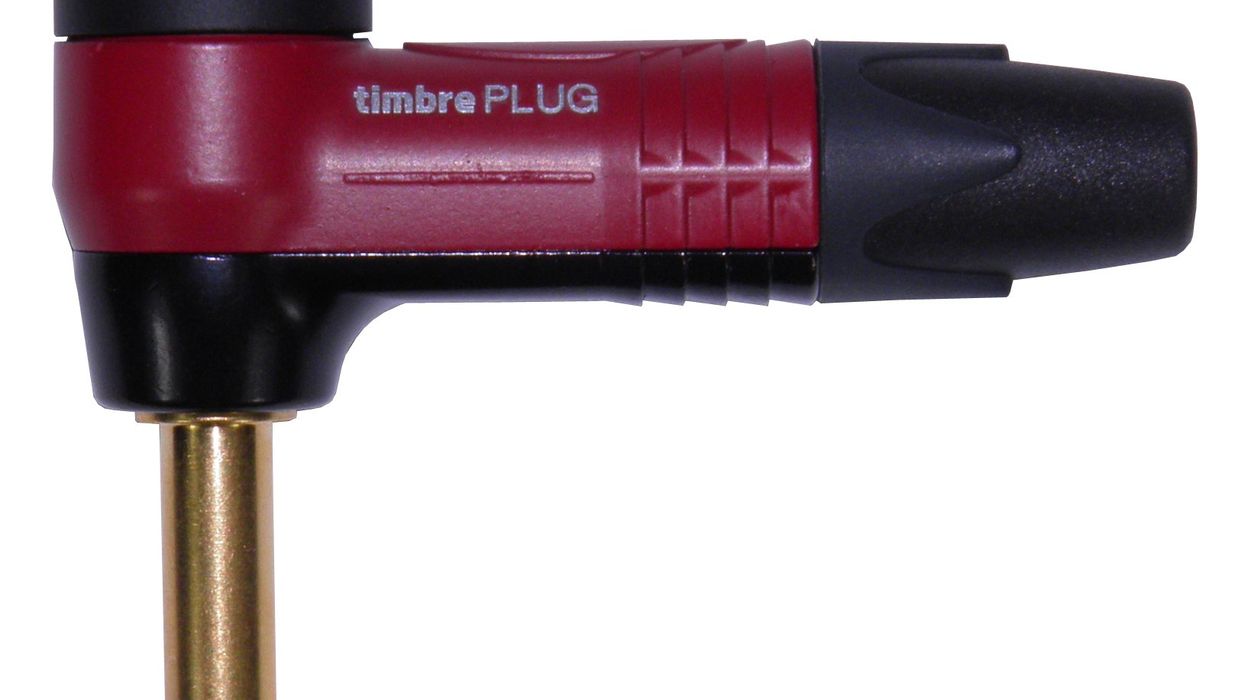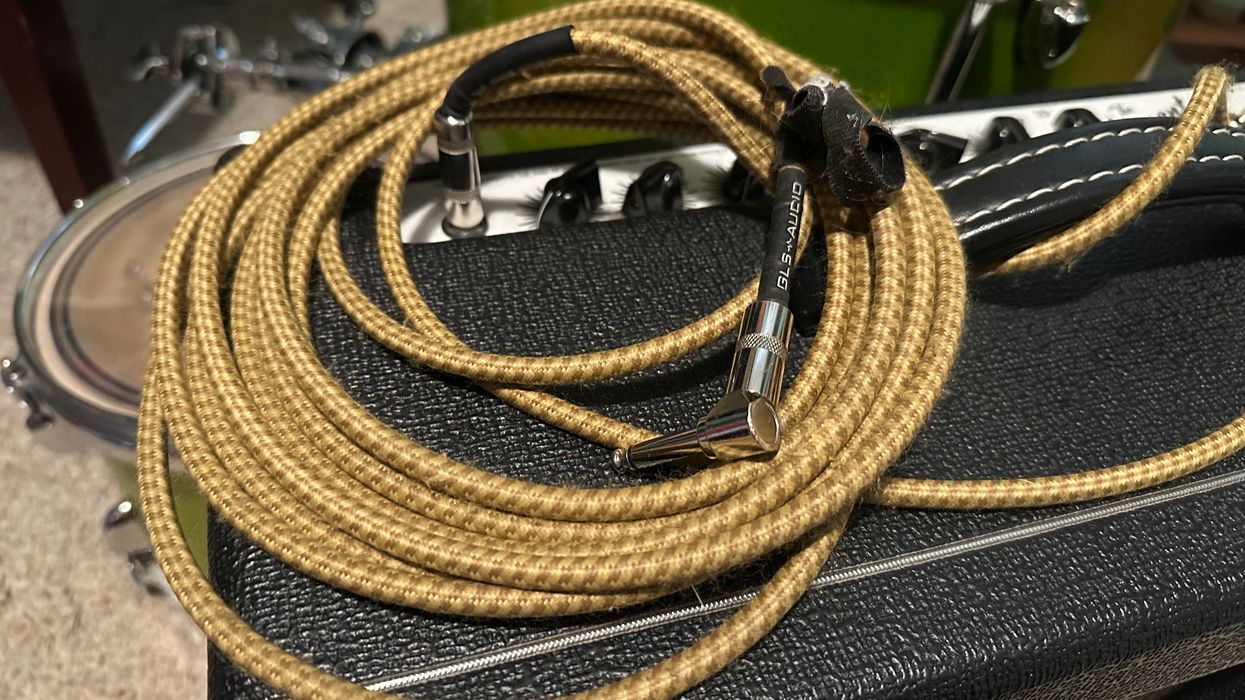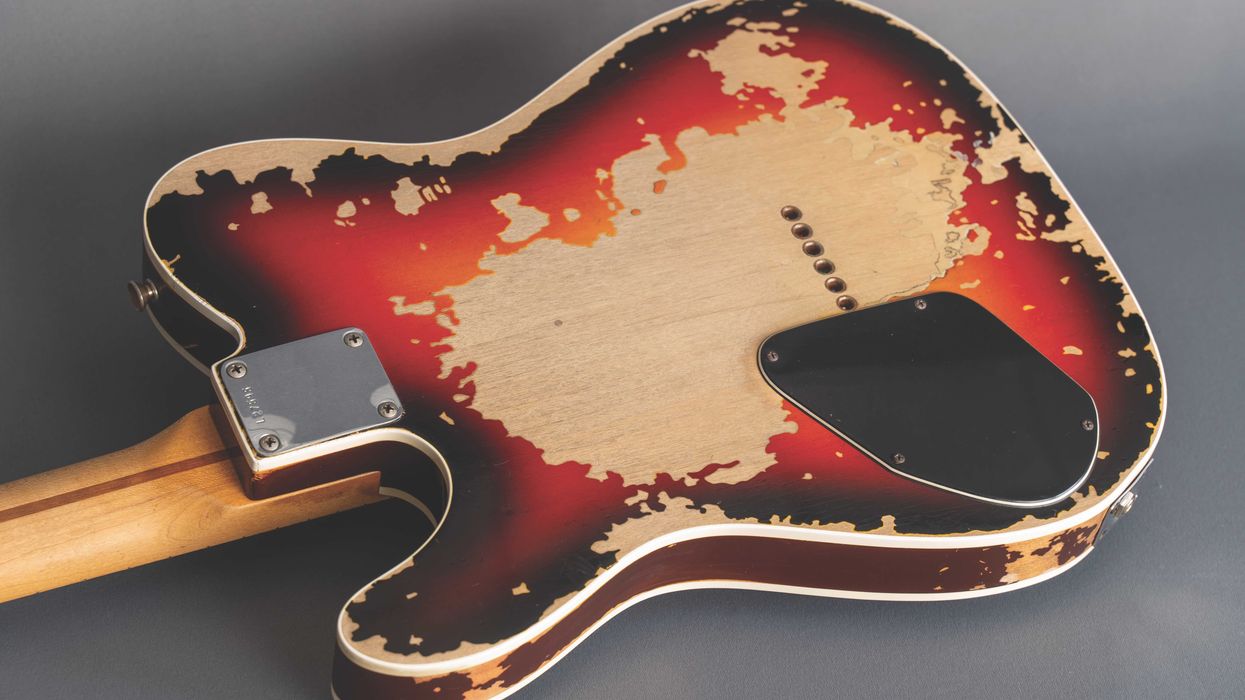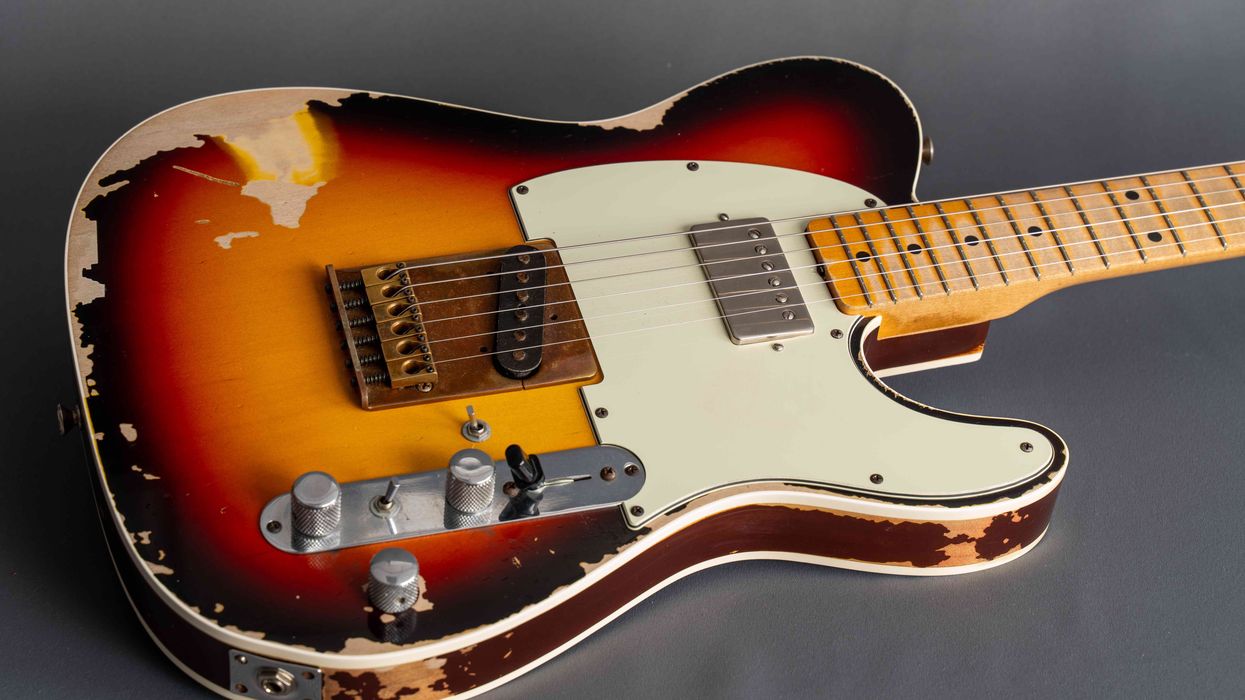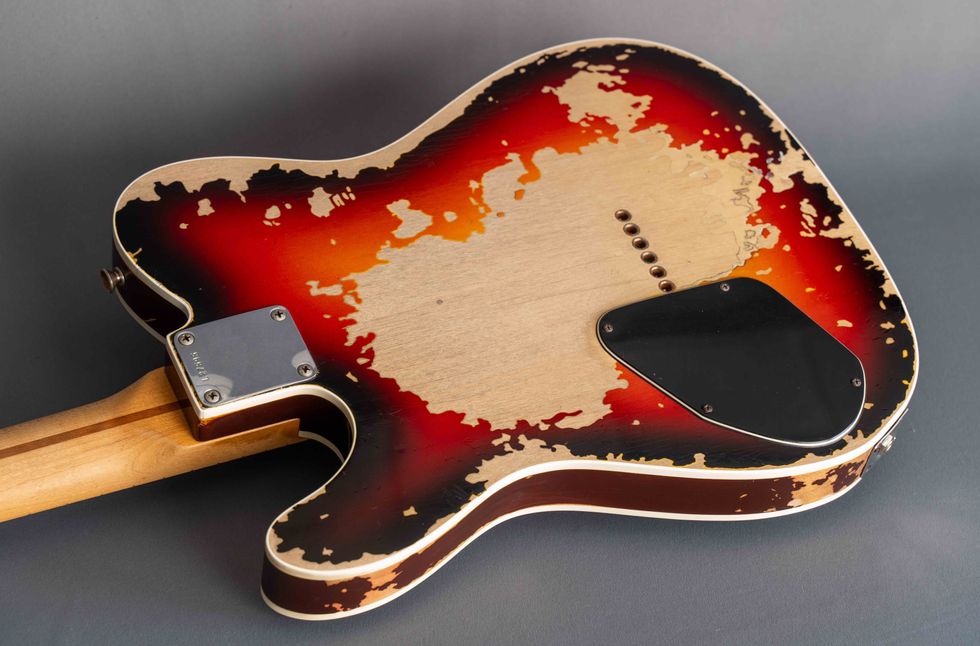Hello and welcome back to Mod Garage. This month we'll take a closer look into what tapping and splitting a pickup really means. Coil tapping is often confused with coil splitting, and a lot of companies and mod pages use the term tapping when they mean splitting, and vice versa. As the golden rule of thumb, you can remember: You are tapping single-coil pickups and you are splitting humbuckers. This should avoid major confusion about this subject.
So, what is this all about? Let's start with coil-splitting humbucker pickups, which is much more common in the guitar world compared to tapping, and we've discussed this many times before. In technical terms, splitting a humbucker means shutting down one of the two coils to ground so the other coil remains active as a single-coil for a much brighter tone, but also with less volume. In other words, splitting a humbucker means making a single-coil out of a humbucker pickup, with all the single-coil pain and glory you know: hum, noise, and reduced volume.
In reality, it never really sounds like a good single-coil pickup. At best it sounds "single-coil-ish," and most of the time, more like a kind of P-90 than a Strat or Tele pickup. Besides this, you'll struggle with an unbalanced volume between the humbucker and the single-coil tone, which is the nature of the beast in any passive guitar circuit, but I'll address exactly this issue in detail soon, in a future column.
"Splitting a humbucker means making a single-coil out of a humbucker pickup, with all the single-coil pain and glory you know: hum, noise and reduced volume."
The humbucker is usually much louder compared to the split version. I think this is no surprise to anyone. Many companies tried to find a compromise for these issues, so there are special humbuckers that sound really good in split mode and like real single-coils. On the downside, these special humbuckers usually don't sound very good as full humbuckers ... choose between the devil and the deep blue sea, it's all up to your personal choice. There are also special humbuckers that try to compensate the volume drop when split. (As mentioned before, we'll cover those in detail in a future column.)
Generally, you need a humbucker with a 4-conductor wiring to split it, so you have access to the start and finish of both coils (Fig. 1). It's not possible to do this with a standard two-conductor humbucker, like a standard PAF-style pickup. With 4-conductor wiring, it's possible to split a humbucker in two different ways.
The first way is by shutting down the slug side (north coil) of the humbucker, leaving the screw side (south coil) active as a single-coil pickup. This is also often referred to as "splitting to the south coil" and is recommended for neck humbucker pickups.
Technically his means:
- South coil start = hot output
- North coil start + north coil finish + south coil finish = soldered together with the bare wire to ground
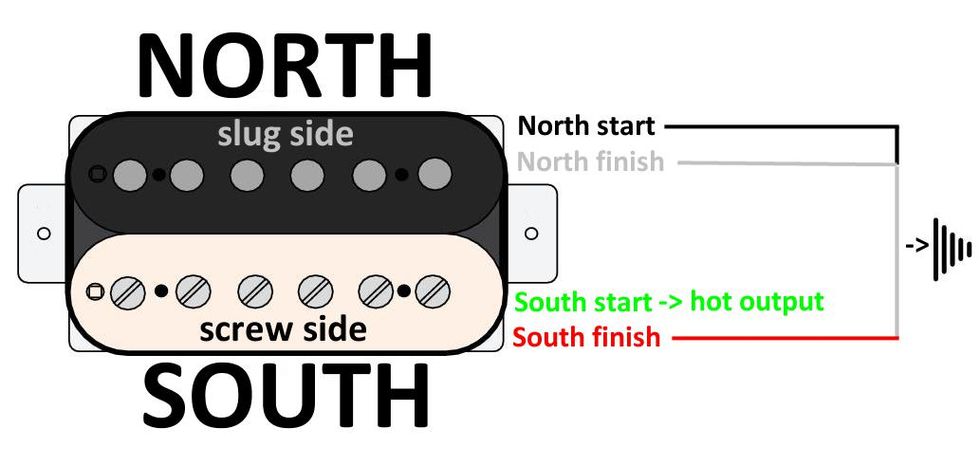
Fig. 2
- Fig. 2 shows what this looks like for a Seymour Duncan humbucker pickup, but you can use this diagram for any 4-conductor humbucker pickup by simply using a color-chart diagram to transfer the different pickup wires to the humbucker you have.You can also split a humbucker with 4-conductor wiring by shutting down the screw side (south coil) of the humbucker, leaving the slug side (north coil) active as a single-coil pickup. This is usually referred to as "splitting to the north coil" and is recommended for bridge humbucker pickups because it gives a fuller sound than compared to the screw side. You can see this illustrated in Fig. 3.
- Techically this means:
- North coil start = hot output
- North coil finish + south coil start + south coil finish = soldered together with the bare wire to ground
Please note: In split mode, the humbucking function is no longer active, so you'll receive all kinds of hum and noise, just like with any other single-coil pickup. Besides using a switch to split the humbucker, it's possible to use a pot for a variable split (aka "spin-a-split"), but this goes too far for our column today.
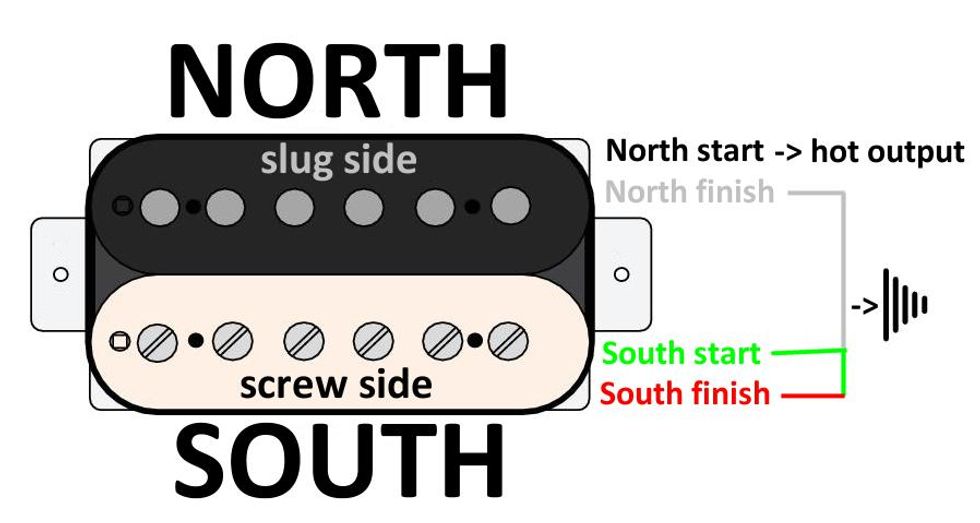
Fig. 3
Now, what's the deal with tapping? A standard single-coil pickup is a spool of wire wound around a set of magnets with a start and a finish, connected to the two pickup wires usually referred to as "hot" and "ground," with the hot wire usually coming from the finish of the coil. A tapped pickup has two hot wires with one connected to the finish of the winding, just like with any standard single-coil pickup. The other one is connected to a point somewhere in the middle or close to the end of the winding, effectively "tapping" (hence the name) into the coil to access a different tone. The tapped connection gives you a lower-output version of the full coil for two different tones from the same single-coil pickup. Usually tapped pickups are overwound single-coil pickups, so you have the full power but also a more traditional vintage-flavored tone at your fingertips when using the tapped connection.
Getting access to both tones is very easy to do. With a standard SPDT on-on switch, you can simply engage the full or the tapped connection following this basic schematic shown in Fig. 4. Instead of the additional mini-toggle switch, you can use any standard push-pull or push-push pot for this option, so you don't need to drill any holes into your pickguard.
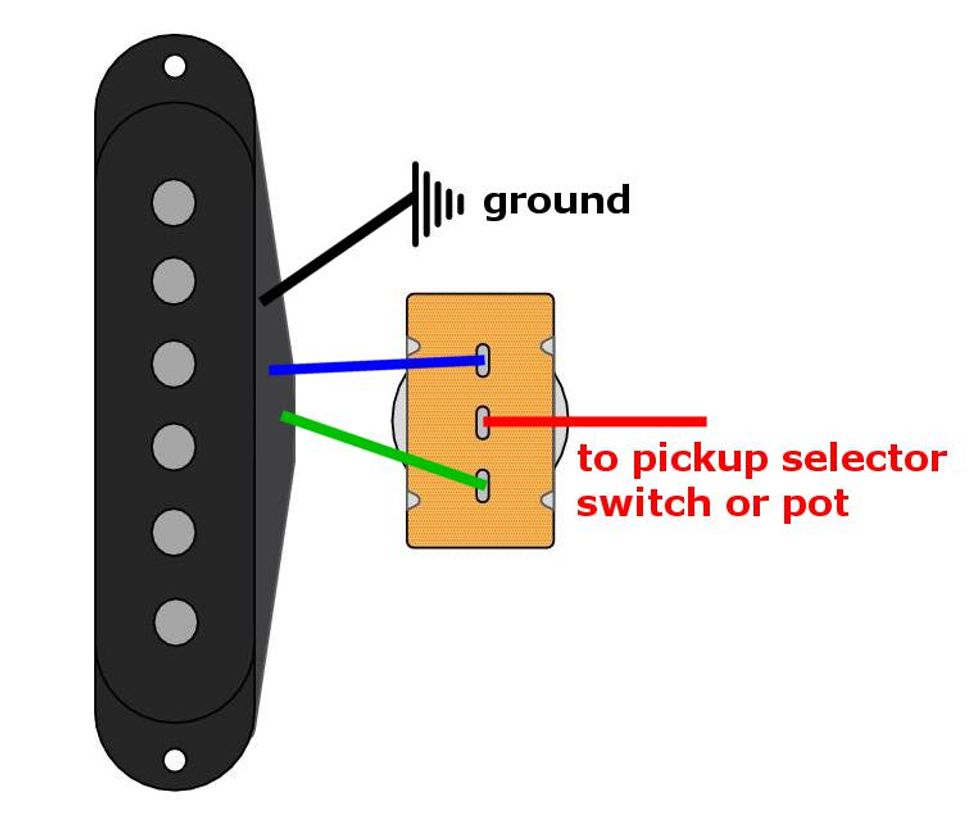
Fig. 4
It's also possible to replace the switch with a pot to make it variable, so you can blend between both sounds. Technically, it will work, but it's not recommended, because you'll have a good portion of sound loss in a passive system. This is a complex system and, in the background, you'll see that besides the blend pot there will also be a volume pot somewhere for this pickup, so here is a shortened and simplified version.
To make it work in a passive system, you need a high-impedance blend pot— i.e., a 250k pot—to avoid any load of the upper winding, resulting in massive treble loss. Most single-coil pickups use 250k volume pots, but the blend pot needs to be smaller than this to avoid a massive volume drop. In technical terms: The blend pot should not act as a series resistor for the volume pot. Both issues are contrary to each other, so in reality a 100k blend pot would probably work, but only with a good portion of tone loss.
Why? Think of the following scenario: The volume pot is fully opened with the cable capacitance passing through, forming the typical operational resonance together with the pickup's inductance. That's the normal behavior and tone we all know. With such a blend pot explained above that is, let's say, in a middle position, the cable capacitance will not reach the pickup because of the attenuation of the pot. The typical operational resonance gets lost and even worse: A low pass will be created, killing the high-end—a really bad scenario.Next month we'll return to our relic'ing project, talking about aging new electronics. Until then ... keep on modding!
